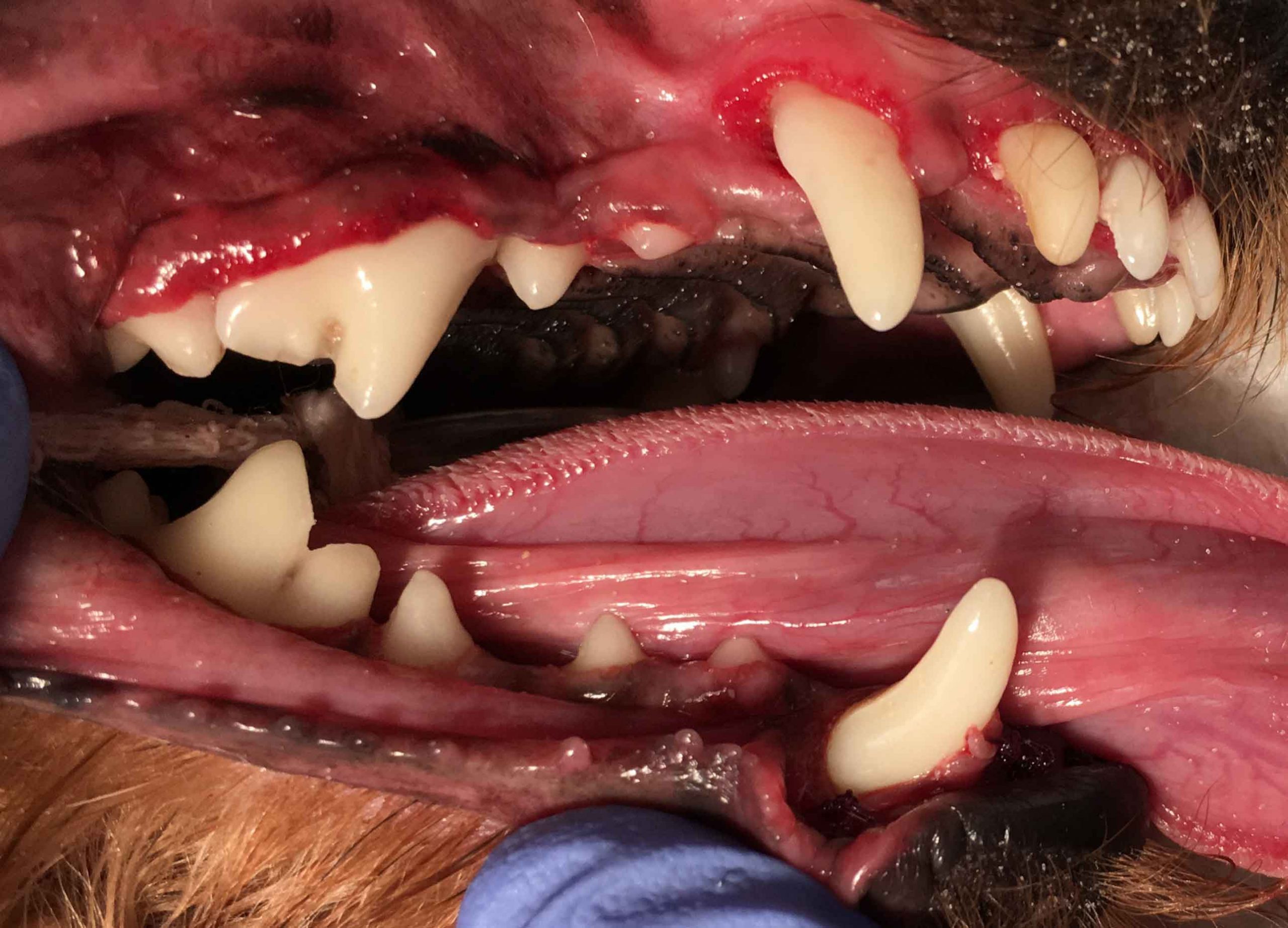
by Jen Azofeifa, DVM
Dental disease in dogs and cats is very common, especially in older ones. Small breed dogs often need to start having their teeth cleaned under anesthesia earlier in life than large breed dogs due to their chewing habits. Cats often need dentals at a younger age if they are prone to gingivitis and tooth resorption. It is recommended to do dental cleanings annually. Why so often? Don’t we have our teeth cleaned every 6 months?
What are the signs of dental disease in dogs or cats?
Often, there are no obvious signs until the dental disease is very severe. Chattering of the teeth, difficulty chewing, halitosis (bad breath), inability to close the mouth, bleeding from the mouth, and loss of appetite often occur with severe dental disease. Sometimes they can get a tooth root abscess and have swelling of the affected side of the face. If you look in your dog or cats mouth, the important areas to look at are the upper and lower premolars and molars. Cats often have resorptive lesions on the upper and lower premolars, even if the tartar is minimal. Annual checkups with your veterinarian are the best way to know if it’s time for your pet to have a dental.

This is the same dog as above, after having its teeth cleaned.
I’m afraid to have my dog or cat under anesthesia for a dental procedure.
Dental procedures are not very invasive and do not usually require your pet to be at a deep stage of anesthesia. We rely on local nerve blocks to numb the areas and prevent them from feeling anything while surgical extractions are performed. The longer you wait, and the more severe the disease, the more prolonged the anesthetic time, and the greater the risk will be. A thorough oral exam under anesthesia can also aid in early detection of tumors.
What happens during a dental procedure?
Once your cat or dog is under anesthesia, dental radiographs are taken to determine if the tooth roots are healthy. The teeth are then scaled (to remove tartar), probed (to determine if there are pockets or defects), and polished. First one side of the mouth is done and, once finished, the dog or cat is turned to the other side and the same process repeated. If no extractions are necessary, the procedure is complete. If extractions are necessary, they are done following the probing.
How will my dog or cat chew if he/she loses teeth?
If the teeth are unhealthy enough to need surgical extraction, it is unlikely your dog or cat is using those teeth to chew anyway. They will either chew on the healthier side of their mouth or not chew at all. They often swallow food whole. If you are not sure what your dog or cat is doing, watch them closely while they eat. Do you hear food crunching? Are they just swallowing kibble whole? If you cat or dog eats only soft food, more than likely tartar is accumulating already.
If you are unsure if your dog or cats needs a dental cleaning, have your veterinarian evaluate them today.
Recent Posts
About Us
Ann Arbor Animal Hospital is a locally-owned animal hospital operating for over 90 years in Ann Arbor, MI.
